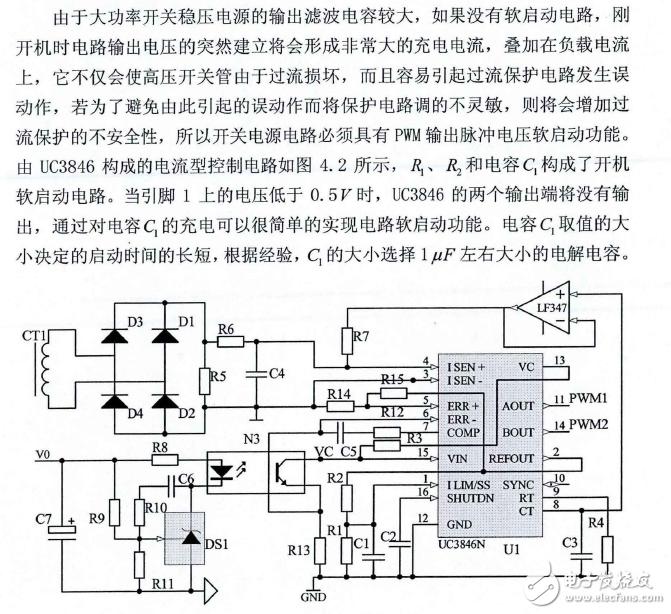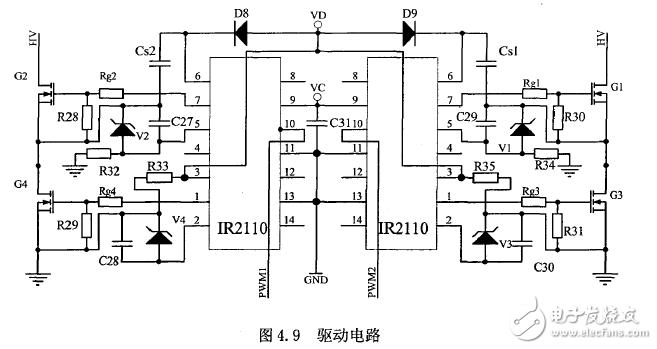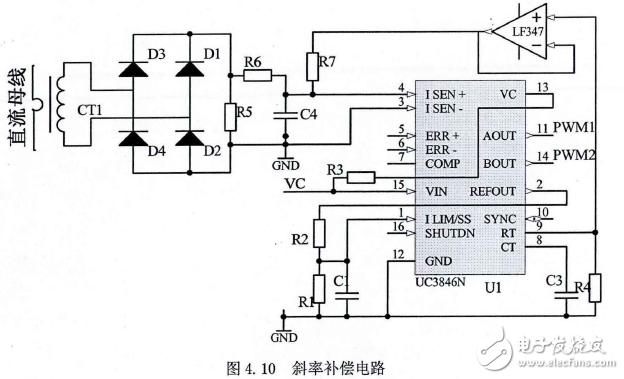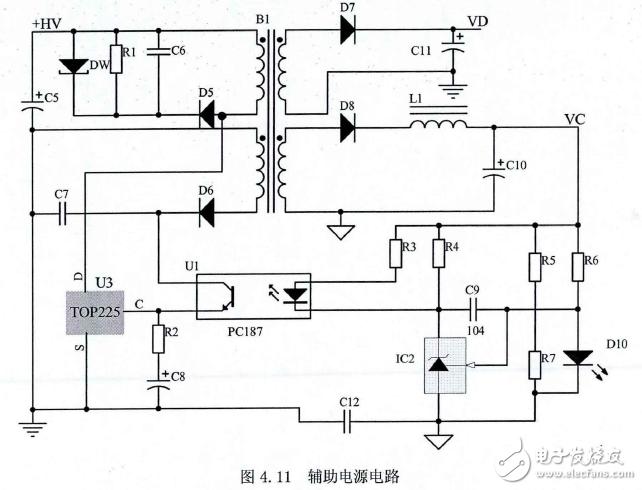The control circuit of the full-bridge topology designed in this paper plays a crucial role in ensuring the stability and efficiency of the power supply system. It consists of several key components, including the controller, protection circuit, current feedback, voltage feedback, drive circuit, and auxiliary power supply. As the central part of the switching power supply, the design of the control circuit directly affects the performance of the entire system. Parameters such as constant voltage and current regulation, ripple levels, input and output characteristics, and overall system reliability are all closely related to the control circuit. Additionally, since the main circuit employs a full-bridge topology, it is essential to implement measures to prevent shoot-through, which can damage the power devices. This section provides a detailed explanation of each functional component within the control circuit.
Introduction to Current Control Chip
The UC3846 is selected as the core control chip for this design. It features a high-current totem-pole output that can drive FETs directly, with a peak output current of up to 500mA. The chip includes an internal precision bandgap reference voltage, a high-frequency oscillator, an error amplifier, a differential current-sensing amplifier, a voltage lockout circuit, and a soft-start function. These features provide advantages such as current limiting, automatic feedforward compensation, undervoltage protection, and improved load response. The operating frequency can reach up to 500kHz, and the maximum input voltage is 40V, with a typical reference voltage output of 5.1V. The internal structure of the UC3846 is illustrated below.

Figure: Internal block diagram of UC3846
Soft Start Circuit

Figure: UC3846 control circuit diagram
Current and Voltage Sampling Circuits
In high-power applications, current transformers are commonly used for current sensing due to their ability to provide electrical isolation and improve efficiency. This design utilizes a current transformer to monitor the primary side current, as shown in the figure. For voltage sampling, a feedback loop using a precision voltage regulator (TL431) and an optocoupler (PC817) is implemented. This external feedback configuration ensures stable output voltage under varying load conditions. The TL431 offers adjustable reference voltages between 2.5V and 36V, and the optocoupler provides galvanic isolation between the power ground and the output ground.

Drive Circuit
The drive circuit serves as the interface between the control and main circuits, playing a vital role in ensuring safe and efficient operation. To protect both the user and the control circuit, an isolated drive circuit is necessary, especially when dealing with high-voltage systems. Two common methods for isolation are transformer-based and optocoupler-based solutions. Transformer isolation offers low delay but may suffer from saturation with wide pulses, while optocoupler isolation provides better waveform quality but requires an independent power supply. This design uses the IR2110 optocoupler driver, which employs a bootstrap boost circuit for isolation. This approach offers compact size, fast response, and high stability, making it ideal for full-bridge topologies.

Slope Compensation Circuit Design
To enhance stability and prevent subharmonic oscillation, a slope compensation circuit is implemented. There are two main approaches: one involves adding the compensation signal to the inverting input of the error amplifier, and the other applies it to the non-inverting input of the current amplifier. This design adopts the latter method, incorporating a voltage follower at the non-inverting input of the oscillator and current amplifier. This helps reduce the impact of current feedback on the oscillator and improves noise immunity, resulting in a more stable and reliable system.

Auxiliary Power Supply Circuit
An auxiliary power supply is used to provide isolated power to the control and drive circuits. In this design, a flyback topology is employed, utilizing the TOP225 three-terminal integrated device. The auxiliary power supply has two outputs, both set to 15V. One supplies power to the control and anti-surge protection circuits, while the other powers the drive circuit. An RCD snubber circuit (comprising R1, D5, and C6) is also included to suppress voltage spikes generated during switch turn-off, enhancing system reliability and safety.

The USB 3.2 specification absorbed all prior 3.x specifications. USB 3.2 identifies three transfer rates – 20Gbps, 10Gbps, and 5Gbps.
Key characteristics of the USB 3.2 specification include:
Defines multi-lane operation for new USB 3.2 hosts and devices, allowing for up to two lanes of 10Gbps operation to realize a 20Gbps data transfer rate, without sacrificing cable length
Delivers compelling performance boosts to meet requirements for demanding USB storage, display, and docking applications
Continued use of existing USB physical layer data rates and encoding techniques
Minor update to hub specification to address increased performance and assure seamless transitions between single and two-lane operation
Improved data encoding for more efficient data transfer leading to higher through-put and improved I/O power efficiency
Backwards compatible with all existing USB products; will operate at lowest common speed capability
Usb 3.2 Cable,Usb Type-C Cable,5Gbps Usb Type-C Cable,10Gbps Usb Type-C Cable
UCOAX , https://www.ucoax.com